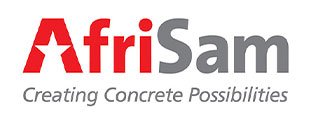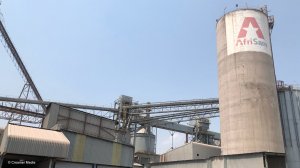

AfriSam promotes use of extended cement products to reduce carbon footprint
Cement producer AfriSam is continuing to promote the reduction of clinker content in its composite cements as a way of reducing carbon emissions.
As a long-time developer of composite or extended cement products, AfriSam has managed to achieve a notable reduction in its clinker factor without compromising on quality, AfriSam Cementitious Central GM Claudene Moorgas says.
The company’s extended cements contain other cementitious materials, such as fly ash from power stations and ground granulated blast-furnace slag (GGBFS) from steelmaking plants, in addition to clinker.
By reusing waste products from other industries, AfriSam reduces the amount of limestone that it needs to mine and clinker it produces, thereby reducing carbon emissions from those processes, while reducing waste to landfill.
“We are constantly searching for new extenders and additives to further reduce our carbon footprint and our impact on the environment as a whole. The end result is that less clinker needs to be produced per tonne of final product, leading to less carbon dioxide (CO2) being generated,” Moorgas says.
Cement production is among the South African economy’s most energy-intensive sectors and, therefore, a significant contributor to carbon emissions.
The cement industry globally is responsible for about 8% of total emissions every year, while in South Africa it is responsible for about 1.7% of the country’s total emissions every year, creating about 671 kg of CO2 per ton of cement produced in 2016 on average. For comparison, AfriSam produced about 598 kg of CO2 per ton of cement in 2021 – significantly less than the global average of about 745 kg of CO2 per ton of cement.
Central to AfriSam’s reduction in CO2 emissions is the production of extended cement products. In particular, the company produces “Slagment”, using GGBFS from nearby steel producer ArcelorMittal, at its Vanderbijlpark Slagment production plant. This has been done for more than 50 years, with the end-product used in the construction of major structures such as dams, bridges and roads.
Among the applications where Slagment has been successfully used are the Ben Schoeman highway in Gauteng; for breakwater blocks at Richards Bay; the Sasol 3 chimney stack, in Secunda; the construction of the South African Reserve Bank, in Pretoria; the Matimba power station; and the Gariep dam on the Orange river.
AfriSam cementitious executive Hannes Meyer says a key characteristic of slag is that it possesses self-cementing properties which can improve the lifespan of buildings.
“Detractors have said we are just diluting our cement, which is absolutely not true. It actually results in several desirable properties, resulting in the cement being more workable, more durable and less prone to cracking,” he tells Engineering News.
Meyer explains that GGBFS acts as a latent hydraulic binder that provides protection from both chloride and sulphate attack. It can also be used together with lime or cement to stabilise soil prior to road construction.
The GGBFS reduces the thermal heat gradient generated when pouring the concrete and, therefore, reduces the likelihood of microcracking, which can weaken the structure’s strength.
As an added benefit, GGBFS can alter the colour of concrete to a near-white colour by replacing up to 70% of the clinker in some cases, thereby giving the concrete a more appealing aesthetic, along with a smoother and more defect-free surface.




